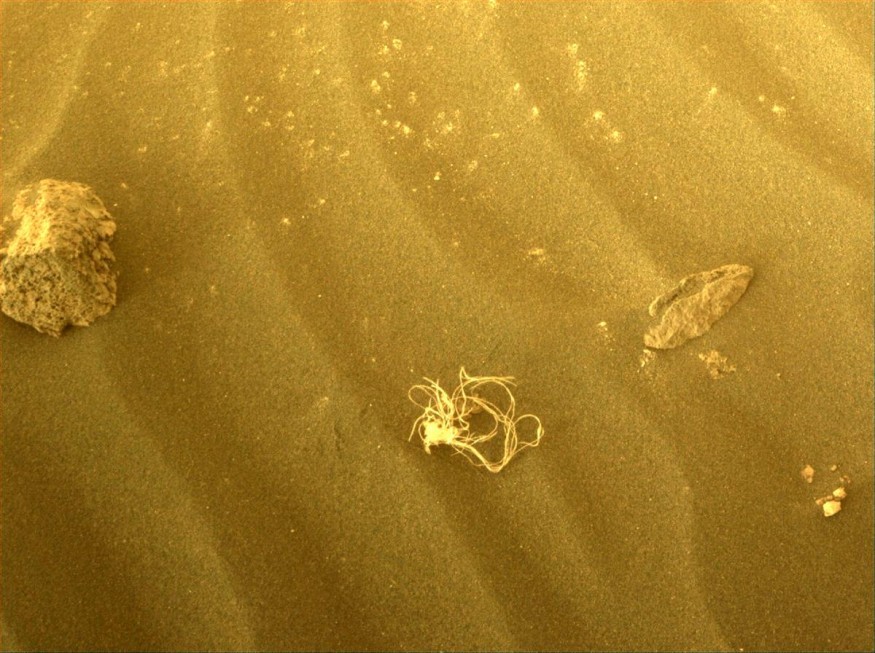NASA Perseverance Rover found a noodle-shaped item on Mars, which was not what they anticipated.
The space agency's spacecraft, which is currently exploring the planet, captured a unique image of a silver item jammed between two boulders in Jezero Crater on Mars.
The bright item transmitted down to Earth for everyone to see some trash actually from the rover, Mirror reported.

NASA Perseverance Rover's Spaghetti Discovery Baffles Scientists
NASA Perseverance Rover discovered another intriguing bit of trash in the form of a spaghetti noodle. The photograph captured Tuesday left researchers perplexed.
The front-facing danger avoidance camera of the rover is assumed to be where the metal fragment originated.
The cameras aid in monitoring the environment to safeguard the rover when it moves or utilizes its robotic arm.
Previous NASA missions to Mars have been suggested as possible sources for the debris photographed by Ingenuity, the helicopter from Mars.
"My team has spotted something unexpected: It's a piece of a thermal blanket that they think may have come from my descent stage, the rocket-powered jet pack that set me down on landing day back in 2021," a member of the Perseverance team explained the "finding" on Twitter.
My team has spotted something unexpected: It’s a piece of a thermal blanket that they think may have come from my descent stage, the rocket-powered jet pack that set me down on landing day back in 2021. pic.twitter.com/O4rIaEABLu
— NASA's Perseverance Mars Rover (@NASAPersevere) June 15, 2022
ALSO READ : NASA Mars Perseverance Rover Shares Clear Photo of 10th Rock Sample After Completing Latest Mission
Last February, the Mars Perseverance rover celebrated a full year on the Red Planet.
NASA's $2.7 billion Perseverance robotic explorer planted the rover on the alien planet gently on Feb. 18, 2021.
The event was NASA's most zealous and exhaustive investigation into whether there has ever been life on the Red Planet in decades.
History of Mars Litters
Concerns and queries concerning humans defiling an alien planet before visiting were raised after the hardware from Perseverance's landing system was found in February 2021.
The Ingenuity helicopter helped discover some other debris in the past and a portion of the thermal blanket. The debris also represented the entrance, descent, and landing hardware, which included a parachute and a cone-shaped part called a backshell.
"The good news is that everything is sterilized before it goes to Mars, and the space radiation environment helps during the nine-month trip to Mars as does the harsh surface environment," Andrew Coates, a space scientist at UCL's Mullard Space Science Laboratory, told The Guardian (via Republic World).
He said that the landing gear-which could create debris-is crucial for enabling a robot to touch down on Mars. Still, he emphasized that the danger of contamination is quite minimal.
The 1967 Outer Space Treaty is notable because it mandates that celestial bodies like the Moon and outer space be kept clean. However, according to reports, many people think the legislation must be sufficiently specific.
RELATED ARTICLE: NASA's Perseverance Rover Found Unexpected Trash on Mars: How Did the Piece of Metal Reach There?
Check out more news and information on Space in Science Times.












